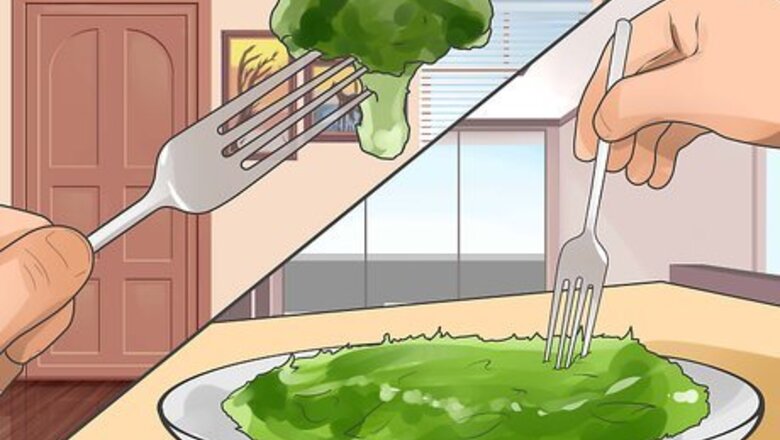
views
Fiber
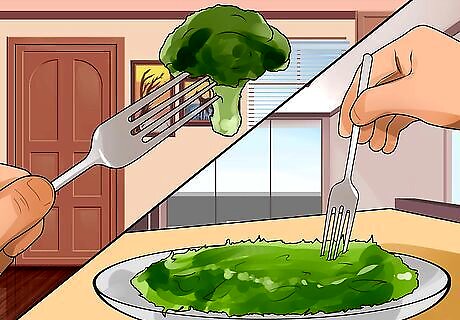
Get most of your fiber from non-starchy vegetables. The Atkins Diet limits fruits, starchy vegetables (like potatoes and carrots), plus grains and flour. However, you can eat non-starchy vegetables, such as salad greens, as long as you still count your carbohydrates. In fact, in the first phase, most of your carbohydrates should come from non-starchy vegetables. Aim to get up to 20 grams (0.71 oz) of net carbohydrates a day from veggies. Vegetables are one of the best ways to get fiber into your diet. Try to construct half of your plate with non-starchy vegetables. Some non-starchy vegetables you can eat include French-style green beans, lettuce and other greens, celery, mushrooms, radishes, asparagus, kale, broccoli, and cauliflower.
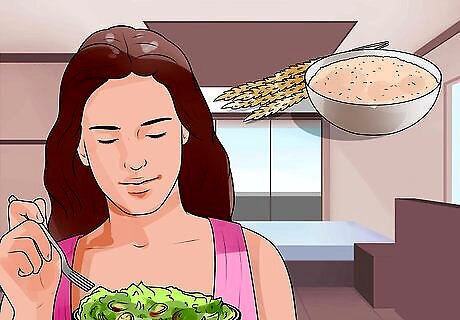
Add a little wheat bran to your food. Another good source of fiber, you can use this supplement by sprinkling it on the top of salads or blending it into low-carb smoothies—or into whatever dish you're eating. Alternatively, top off your salads and snacks with flax seeds. You can also mix ground flax seeds into a variety of foods, such as yogurt, broth, or ground beef.
Keep track of how much fiber you’re getting. Aim to get at least 25 grams of fiber a day if you're an adult woman and 36 if you're an adult man (ages 19-50). Read nutritional labels on products to see how much fiber is in each serving. Use a journal or an app, such as the Atkins Mobile App, to track your fiber intake. A single serving of most vegetables is about 2-4 grams of fiber. For example, a cup of spinach, swiss chard, or kale is also 4 grams. You can also get fiber from eating small amounts of almonds, walnuts, oat bran, and rice bran.
Hydration

Drink at least 8 glasses of water a day. The Atkins Diet recommends drinking at least 8 glasses of water a day to help maintain a regular regimen. Water helps with constipation by keeping stools looser. The Institute of Medicine recommends that men drink at least 13 cups (3,100 mL) of water a day, while women should drink at least 9 cups (2,100 mL).
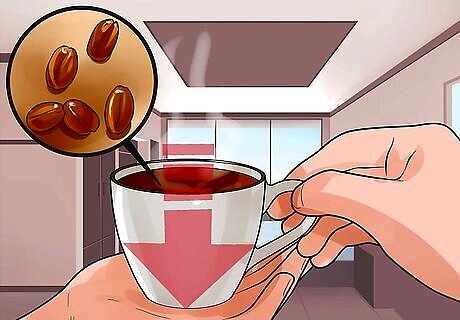
Don't drink too much caffeine. You can count caffeinated beverages such as coffee, tea, and diet soda as part of your water intake. However, too much caffeine can make you crave sugar, which is off-limits on the Atkins Diet, so limit your intake of caffeinated beverages. If you’re a big fan of coffee or tea, try lower-caffeine alternatives so you can still get the flavor you love. For example, go for decaf or half-caf coffee or tea, or drink an herbal tea.
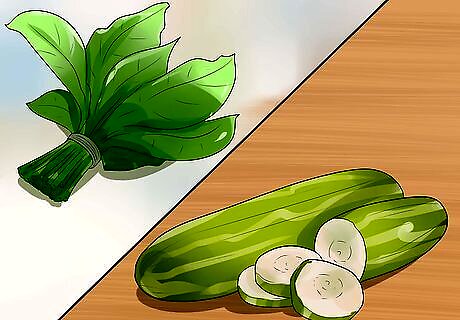
Eat juicy vegetables to boost your water intake. For instance, fresh cucumbers are high in water, so they can help keep you hydrated. They're also non-starchy, so they're approved for the Atkins Diet. Other juicy, low-starch vegetables include spinach, celery, lettuce, and zucchini.

Flavor your water with fruit or veggie slices to make it more interesting. The Atkins Diet requires that you skip most fruits (lemon or lime is okay) and eliminate starchy vegetables, especially for the first few weeks, until you begin to maintain your weight. However, you can add certain non-starchy vegetables to water add interest and to flavor it, such as slices of cucumber, a few fresh strawberry slices. You can also use flavor packets sweetened with small amounts of a sugar substitute, such as sucralose (Splenda), stevia, aspartame (NutraSweet), or saccharine (Sweet-n-Low). However, you do need to count these packets as a gram of carbohydrates because of the fillers in these types of sweeteners.
Other Methods
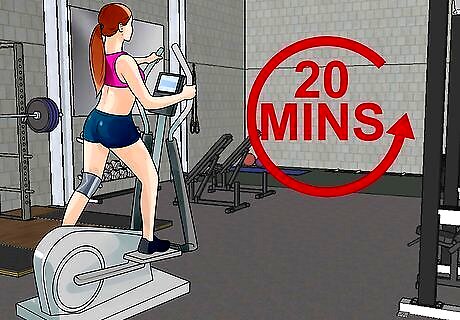
Exercise regularly to promote better digestion. Getting enough exercise can help move things along in your digestive tract. Try to exercise a little bit every day, 20 to 30 minutes at least. In total, aim for 150 minutes of exercise every week, including some strength exercises like lifting weights or abdominal exercises.
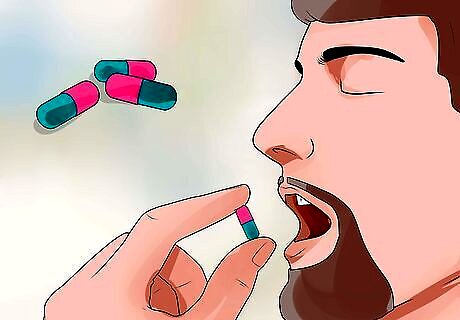
Improve your digestive health with probiotics. Try taking a probiotic in special capsules that dissolve in the intestines. Avoid ones that digest in the stomach, which could disrupt active beneficial bacteria. Studies have shown that probiotics can help decrease constipation. Taking such a supplement can decrease how long it takes for food to go through your system. It also softens stools and may increase the number of times you go to the bathroom per day to 2 or more. Decrease your supplements if it is too often or inconvenient. Look for the probiotic supplements containing L-plantarum (Lactobacillus-plantarum). It helps to maintain intestinal health along with a variety of other benefits, including reduced blood pressure and better immune function. Bifidobacterium supplements may also help. Ask your doctor before starting any supplement. In addition, they can help you determine how often you should take a supplement.
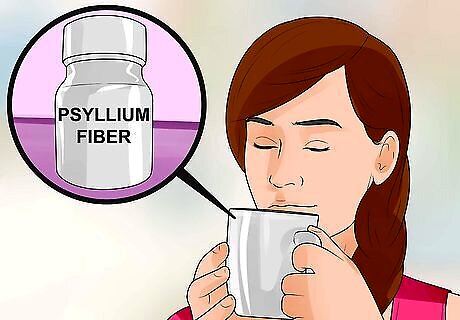
Mix psyllium fiber into your water for a laxative effect. Psyllium fiber is made from the husks surrounding the psyllium seeds. It is soluble in water. Mix a tablespoon or so (about 5 grams) into a glass of water and drink the mixture. You can drink this solution once a day. Be sure to get the ground kind so that it dissolves easily. You should be able to find this supplement at health food stores.

Use laxatives to relieve occasional constipation. If you only have constipation once in a while, you can take laxatives from time to time to help yourself go to the bathroom on those few occasions. You have your choice of several over-the-counter laxatives to help with your situation. One option is to use a stool softener. These loosen up your feces by drawing more water into them. In turn, the looser feces make it easier for you to go to the bathroom. A couple of examples of this type of laxative are MiraLax, Colace, and Surfak. These usually take 6 to 8 hours to work. Another type of laxative is a lubricant. Mineral oil is an example of this type. Lubricants are just what they sound like—they coat your colon and enable feces to pass more easily. You can also use milk of magnesia and lactulose, which are designed to help you pass feces by increasing liquid/moisture in your colon.










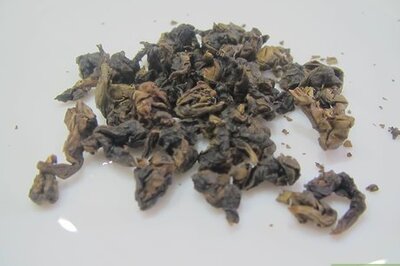
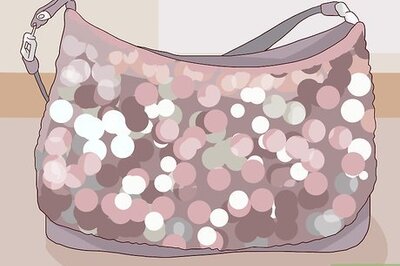







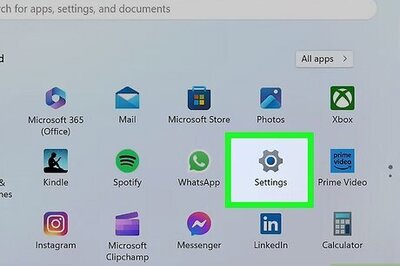
Comments
0 comment